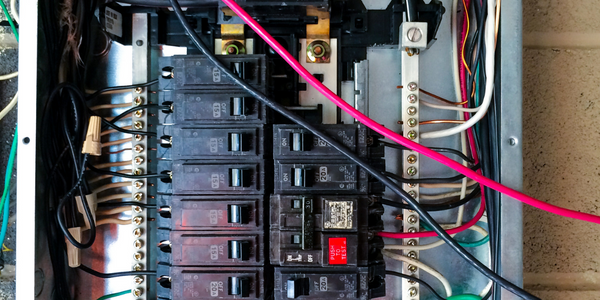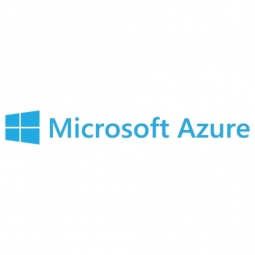下载PDF
Additiv's Digital Transformation with Azure: A Case Study
技术
- 网络安全和隐私 - 安全合规
适用功能
- 质量保证
用例
- 租赁金融自动化
挑战
Additiv 是金融服务行业变革的领先催化剂,它面临着在高度监管的行业内运营时坚持最高安全和合规标准的挑战。该公司决定将其基础设施迁移到 Azure,但这种转变需要严格遵守多个地点的合规性法规。挑战不仅在于确保无缝过渡,还在于利用数字化的优势为客户提供创新、灵活的解决方案,无论他们身在何处,都可以轻松扩展并适应他们的特定需求。
关于客户
Additiv 是金融服务行业变革的领先催化剂,帮助全球最大的金融机构利用数字化。该公司在严格监管的行业内运营,必须坚持最高的安全和合规标准。 Additiv 总部位于瑞士,属于中型组织类别,拥有 50 至 999 名员工。该公司致力于为客户提供创新、灵活的解决方案,无论他们身在何处,这些解决方案都可以轻松扩展并适应他们的特定需求。
解决方案
为了应对这些挑战,Additiv 与 FastTrack for Azure 合作。 FastTrack for Azure 提供了专家指导,以确保无缝过渡,严格遵守多个地点的合规性法规。该解决方案涉及使用 Azure Migrate 和 Azure 云采用框架。 Azure Migrate 帮助 Additiv 评估其应用程序、数据和基础设施并将其迁移到 Azure,而云采用框架提供了最佳实践、文档和工具来帮助 Additiv 管理和优化其云采用之旅。该解决方案使 Additiv 能够利用更高效的运营,并为客户提供创新、灵活的解决方案,可以轻松扩展和适应他们的特定需求。
运营影响
相关案例.

Case Study
Digital Transformation in Insurance: A Case Study of Menora Mivtachim
Menora Mivtachim, one of Israel's largest pension fund and insurance carriers, was facing a significant challenge due to demographic trends in Israel. The growing rate of retirement planning and services was putting unprecedented pressure on the already strained insurance sector. The pension claims process was bottlenecked with complexities, bureaucracy, and errors. Menora Mivtachim's existing pension process was heavily manual and spreadsheet-based, requiring a team of 10 full-time employees to manage. The process involved gathering applicant information, conducting personal surveys, compiling bank information, and finalizing agreements. To leverage the growing opportunity in the retirement sector and position themselves as innovative insurtech leaders, Menora Mivtachim needed to digitalize their process, streamline the claims experience, and reduce quote times through automated processes.

Case Study
Automation in Mining: Unleashing Productivity and Efficiency with 5G
The mining industry, a significant contributor to global economic activity with revenues exceeding USD 500 billion, is facing a challenge of improving efficiency and profitability. The industry is gradually shifting its focus towards automation as the next area of opportunity. Boliden, one of the world's most successful mining companies, operates the Aitik mine, the largest open pit in Europe. The Aitik mine is expanding, and with the increase in production from 36 million metric tons of ore to 45 million metric tons, the amount of rock removed will also increase significantly. However, increasing the number of machines required for rock removal in a busy mine is not a straightforward task. Additionally, every blast creates toxic gases that need to dissipate before humans can enter the area and begin excavation. The challenge lies in improving efficiency, managing the increased production, and ensuring safety in the harsh mining environment.

Case Study
ANZ Bank's Digital Transformation with Nintex Advanced Workflow
ANZ Bank, one of the top 50 banks in the world and the fastest-growing bank in Indonesia, was facing a challenge with its rapidly increasing transaction volume. The bank's existing business processes and workflow were becoming overwhelmed. Like most banks in Indonesia, ANZ was manually handling document submission and verification. Customers filled out paper loan applications and supporting documents, then delivered them to bank branches by mail or courier. Branch officers traveled to the bank’s headquarters or used postal mail, email, and phone calls to submit loan documents for verification. Lost or inaccurate documents created more emails and phone calls. Additionally, ANZ had to adhere to strict verification and financial regulations, including the Foreign Accounts Compliance Act. This act requires that all banks outside the United States provide key information about U.S. clients, including citizenship validation, to the Internal Revenue Service–a complex yet crucial process.

Case Study
Streamlining Agricultural Automation with Eaton’s Package Solution
Grossi Electric, a full-service electrical contracting company, was tasked with facilitating the hulling, dehydrating, and preparation processes at a walnut processing plant in Waterford, California. The company aimed to explore innovative options for creating cleaner and more efficient control panels that would eliminate the intensive time, labor, and costs associated with excessive point-to-point wiring. As a rapidly growing electrical contracting company, Grossi Electric was also concerned about managing risk and cost while attempting to establish a new and unfamiliar service offering in a mature market for control products. The walnut processing plant presented a prime learning opportunity for the company to discover the best way to build more tailored control panels for its customers. The challenge was to enable a lean automation process that was smarter, simpler, more effective, and of unique advantage for clients.

Case Study
Dell's Transformation: Boosting HR Productivity with RPA and Workday
Dell Technologies, a global tech giant with over 160,000 employees, was grappling with high-volume and repetitive transactional HR processes. The company was seeking to improve efficiency and cost-effectiveness while freeing up HR employees for higher-value, strategic work. The challenge was to eliminate transactional work for end-to-end processes such as open requisition recruiter assignments, onboarding process reminders and status updates, and offer status management. This would allow HR employees to focus more on person-to-person interactions.

Case Study
Advancing RPA Initiatives in Financial Reporting: A Case Study of a Global Bank
The global bank, based out of North America, was facing a significant challenge in managing its report repository connected to dozens of applications and database systems used across the enterprise. The bank, serving close to 20 million customers worldwide, had to manually download hundreds of thousands of reports from these applications to a centralized location for use on a weekly basis. The file formats were typically unstructured data, usually in text or PDF, with no consistency in report formats across the different applications, or even for reports created using the same application. End users would then manually copy data from the text / PDF formats to Excel-based reports used for reconciliation, attestation, financial reporting, journal entries and other uses. This process was time-consuming, prone to human error, and inefficient.





